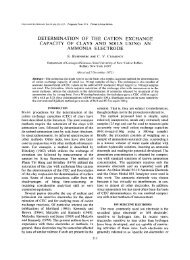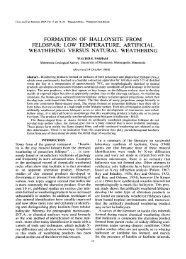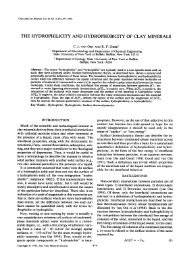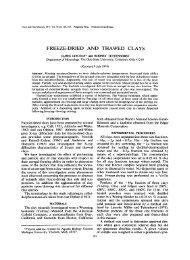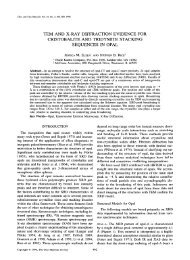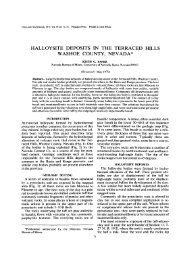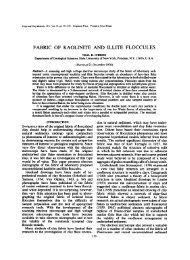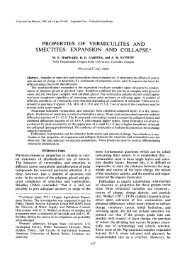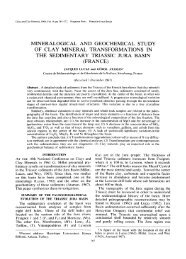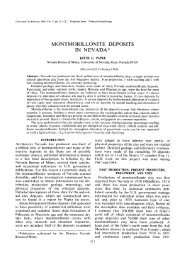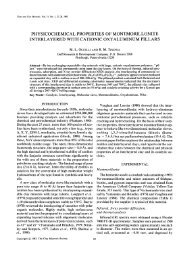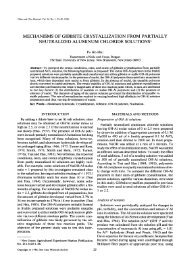Clay Doctor - Clay Minerals Society
Clay Doctor - Clay Minerals Society
Clay Doctor - Clay Minerals Society
You also want an ePaper? Increase the reach of your titles
YUMPU automatically turns print PDFs into web optimized ePapers that Google loves.
Dear <strong>Clay</strong> <strong>Doctor</strong>: I was riding my motorcycle through New Hampshire when I noticed<br />
flashes of light coming from the road cuts. On closer inspection, I found that the flashes<br />
were sunlight being reflected from mica flakes! The question then occurred to me: Are<br />
there different kinds of mica?<br />
Biker, Hanover<br />
Dear Biker: I also have found that, next to the petrographic microscope, the best way to<br />
study coarse-grain phyllosilicates is on a bright summer day on a Harley at 80 mph. In<br />
answer to your question, there are three major classes of mica: (1) white mica, which<br />
includes muscovite, commonly found in granites; (2) brittle mica, which includes<br />
margarite, a calcium-rich variety; and, finally, (3) Formica, which includes fornikite,<br />
commonly found in Australia.<br />
Commentary<br />
This is one of several <strong>Clay</strong> <strong>Doctor</strong>s that were aimed at Bob Reynolds, who rode a<br />
motorcycle around Hanover, New Hampshire. There actually is such an outcrop that is<br />
visited by Dartmouth students. Formica, of course, is not a mica at all, but is used to<br />
cover kitchen counters. “Fornikite” uses the Australian pronunciation: “Do you like ta<br />
fornikite, myte?”<br />
Bob Reynolds with his dirt bike<br />
17



